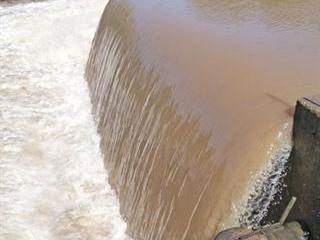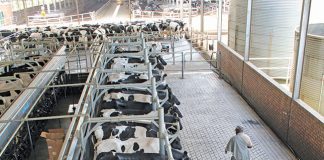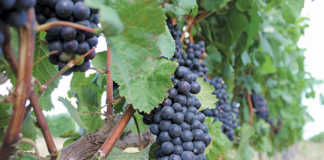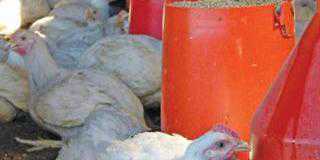
“My late father, Keith, was keen on using natural energy wherever possible, making solar panels and trying a little bit of this and a little bit of that,” says Norman Collett. But there wasn’t much Keith could do with the water of the Brak River, which flowed past the family farm. It was used for flood irrigation, but there was simply too little water to generate energy.
Things changed in 1974 when this tributary of the Great Fish River near Cradock changed from a tiny stream to a fast-flowing river as water from the Orange-Fish Tunnel was released into it. By the early 1980s, Keith had erected two turbines which provided one-phase household electricity to Grassridge Farm, thereby ensuring it was no longer dependent on Eskom. Keith’s turbines eventually generated a total of 12kW.
Then, about five years ago, André Muller, Norman’s son-in-law, suggested introducing centre pivots to produce extra feed for the Dohne Merinos and Brangus/Bonsmara cattle on the 4 500ha farm.
Electricity Costs
There was a problem, though. The cost of getting Eskom to install the necessary line was simply too high. So the family turned to the Brak River once more. Norman told André that since he had gone to university and done “all these clever things”, why didn’t he “sit down and do a pretty sum”, and work out what it would cost to install new turbines.
“André told me that from the figures received from the manufacturers, we could pay off the new turbines in five years,” recalls Norman. Fortunately, because no water was diverted from the Brak River to the turbines, there were no legal implications removing the old and installing the new turbines.
However, because work on the micro-hydropower station could only be done during the three-week dry period when the water affairs department switches off the flow from the gariep dam, the installation of the turbines and the new three-phase electrical system represented a long-term project that would cost R1,8 million.
Norman explains that in 2009 they had to modify the old stone walls and build new sluice gates. In 2010, the old turbines were removed and replaced by two new cross-flow turbines from Vortex Hydro Systems. In 2011, another turbine was installed, and the new power lines were constructed to accommodate three-phase power.
Although Vortex provided assistance, it was still a daunting engineering task for a Karoo livestock farmer, says Norman. “There were nights when I just lay there and thought about how I was going to pick up those machines and put them down there.”
In the end, however, he came up with an ingenious plan. During the construction of the Grassridge Dam in the 1920s, cocopans had been used. The Colletts had acquired one, along with tracks.
This antiquated system proved to be the most cost-effective way of inching 1t turbines down a steep river bank. “That is what it was built for,” says Norman, as we near a centre pivot that was installed only a few months ago. “The biggest thrill for me was when I switched this thing on.”
Reaping the benefits
At the pump house, he shows me the 17kW motor that drives the centre pivot that irrigates teff on old flood-irrigated lands and virgin soil. He’ll be installing another pivot that will be fed by water flowing from a canal at an elevated position. This will create enough natural energy to enable a smaller 4kW motor to drive the centre pivot. Besides the pivot, the Grassridge Farm turbines supply electricity to three staff quarters, the workshop and a number of submersible pumps on the farm. In fact, says Norman, more electricity is currently being produced than can be used on Grassridge Farm.
As a result, Eskom’s load-shedding, tariff increases and power failures are not an issue. “I don’t know what Eskon is about,” Norman chuckles. And for him, electrical appliances are a cost saving rather than a luxury. “We put in an electric stove to save money! On a normal farm you wouldn’t do that,” he laughs.
A major benefit is that the turbines require minimal management and servicing. “It takes a couple of days in the year – just a bit of paint here and a bit of a clean-up there. We also have to check that the bearings and belts are in order and replace where necessary.” During a maintenance period, a standby 25kVA diesel generator supplies electricity to the farm.
Contact Norman Collett at [email protected].













